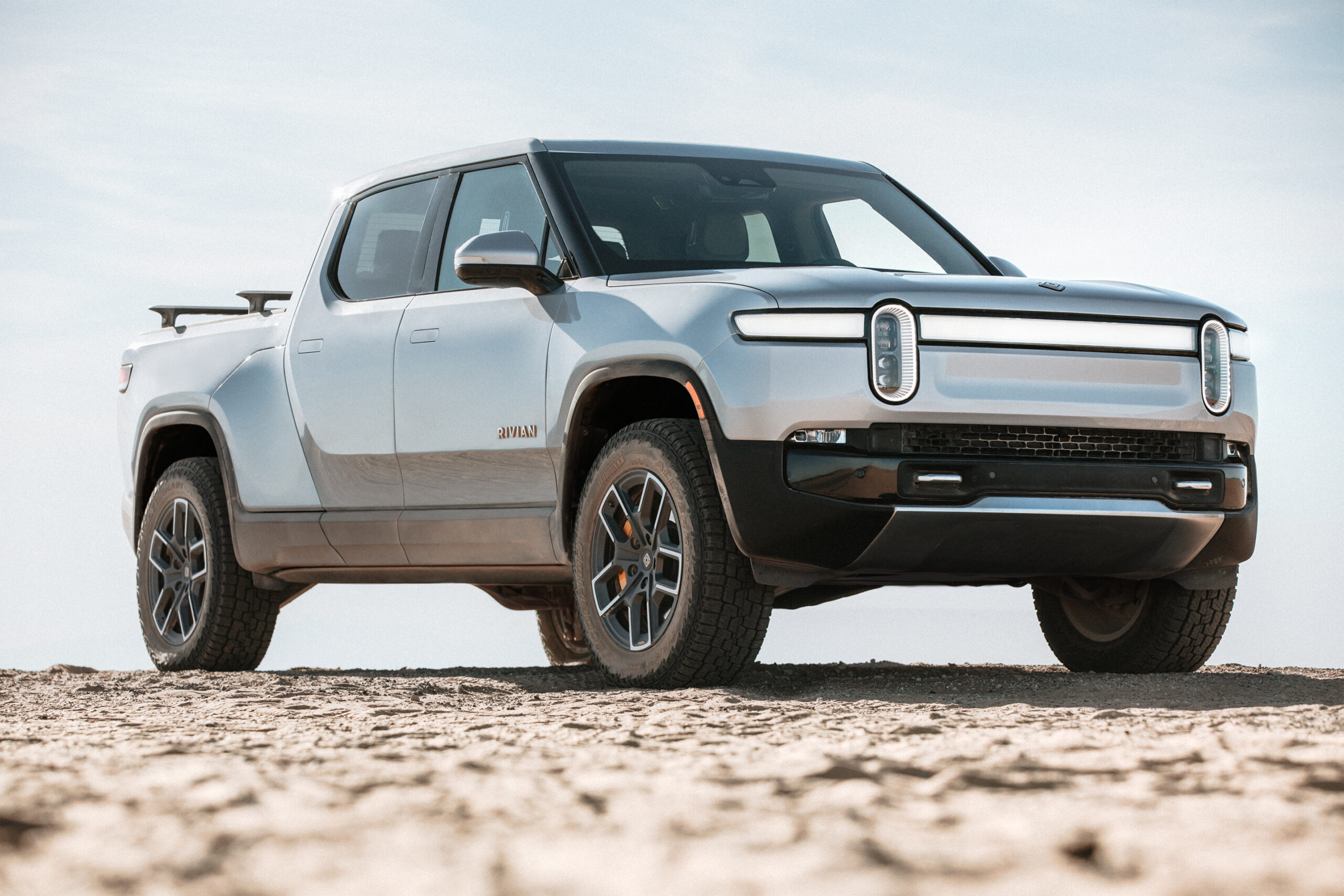A few years back, a company called Rivian Automotive launched its first-ever electric pickup truck, named the R1T.
The large truck has 20-inch wheels, can go 0 to 60mph in 3 seconds, and has gotten a lot of attention for its futuristic-looking design.
The price for such groundbreaking technology? Around $80,000 on average.
At the same time, however, Rivian’s cars are so costly to produce, the company itself is losing more than $30,000 on each one it sells, according to new reporting from the Wall Street Journal’s Sean McLain.
McLain joined Texas Standard to talk about Rivian’s plans in the EV car market. Listen to the interview above or read the transcript below.
This transcript has been edited lightly for clarity:
Texas Standard: A bunch other industry publications have their jaws on the floor about this $30,000 loss figure on every unit it sells. Did I get that right?
Sean McLain: Well, yeah. I mean, look, it’s not a great position to be in.
In a nutshell, the amount Rivian pays for parts and the complexity of the vehicle, and because they still produce low volumes in their factory, means that their costs per vehicle are very, very high. And as a result, despite selling their vehicles, I think in the second quarter [for] about $88,000 on average, they still lost $33,000 on every sale, which is around the cost of a base model Ford F-150, if you could find one of those.
If you could ever find one. But let’s back up for just a moment, because I think about Rivian as having generated more buzz and more excitement than just about any EV company this side of Tesla. Trucks are still, though, a growing category in the EV market. Why has there been so much hype around Rivian?
Well, look, I think part of the reason why there’s so much hype around Rivian is that the car, frankly, is really cool. It is a no compromise vehicle. It goes like hell both on and off road. And that’s not usually something you can find in a car, no matter what you pay for a vehicle.
What Rivian’s managed to do is to create a car that can do both. And I think that’s what’s really driving a lot of the excitement and the demand around that vehicle.
Overall, as a business, they couldn’t be performing that well if they’re losing that much per unit. However, I mean, on balance, how is the company doing?
Well, look, I think the company is currently healthy. Look, they started late 2021, early 2022, with about $18 billion in the bank.
But they burned through it rather quickly.
They’ve gone through half of it in about two years, which is not a great scenario. And really what got me looking into this, you know, “how is this company going to make it? Can it make it?”
It’s got enough money to make it through 2025 and eventually is going to have to raise more money. And right now, even with interest rates being the way they are, with markets being the way they are, I mean, all indications are that Rivian can go out and raise more money so they’re not in immediate danger.
However, Rivian is extremely worried about the situation and you imagine they would be. You know, the car industry is defined by narrow margins and the necessity of high volumes to drive economies of scale. And Rivian’s got big negative margins and low volumes, which, you know, is not a recipe for success in this industry.
So they’re trying to change that, but it is a difficult position that they’re starting from.
It also really limits their ability to be flexible on prices. And that seems to be the pinch point right now, whether you’re talking EVs or, you know, old gas vehicles.
Yeah, I mean, look, Rivian sells currently a pickup truck that starts at $73,000 and an SUV that starts, about 3 to $5000 more. That is an expensive segment of the market. It is a luxury vehicle.
And, you know, in 2018/2019/2020, and even into 2021, I mean, that didn’t seem like a bad business play, right? That’s how Tesla started. And now, as we sort of head into 2023, you know, interest rates are higher. People’s willingness to pay for expensive luxury vehicles is less than it was when Rivian first had this idea. So they’ve got to figure out how to find enough people willing to pay on average $88,000 to purchase a Rivian right now.
I think the conventional wisdom right now is that Tesla is still firmly in control of the EV game. A lot of the U.S. manufacturers obviously have their hands tied with the labor action from the UAW right now. I wonder, where does Rivian fit into this entire constellation?
Look, I mean, Rivian is a minnow in the global automotive market. They, I think in two years, have produced about 60,000 vehicles, which is one quarter to half a year worth of production at a normal factory. So they are still small potatoes in this market.
Now, that said, if you just break it out into EV sales in the U.S., you know, it’s still Tesla. But Rivian, in terms of the race for a distant second, third and fourth… it’s pretty close up there in the race in the U.S.















